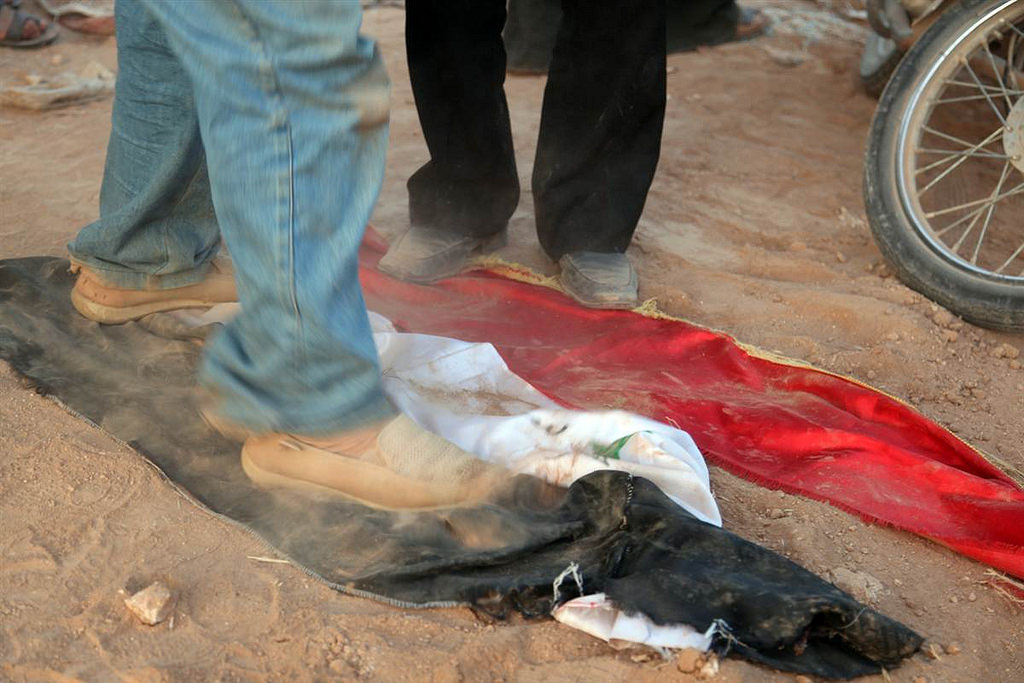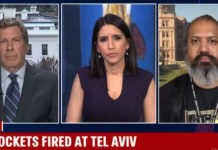Eighty percent of the opposition fighters in Syria have “a clear Islamist agenda,” a senior Israeli intelligence officer said on Monday, noting that Iran continues to aspire to nuclear weapons despite abiding by a provisional agreement signed with the superpowers.
Brig. Gen. Itai Brun, head of Military Intelligence research, assessed in a presentation to the Herzliya Conference on Monday that of a total of some 120,000 men fighting the Assad regime, some 50,000 are Salafists who would like to see Islam implemented in the future Syria, belonging to groups like Al-Nusra Front. Approximately 30,000 support a more moderate political Islam, akin to the ideology of the Muslim Brotherhood. The number of global jihadists, members of organizations such as ISIS, is around 15,000, or 13 percent of the fighting body. Only 20 percent of Syria’s fighters, Brun estimated, could be categorized as “secular.”
“The Islamist nature of the [Syrian] opposition will have, I believe, a great impact on the future Syria,” Brun said.
Speaking to The Times of Israel last month, a Syrian opposition member affiliated with the pro-Western Free Syrian Army warned of the expanding influence of Al-Nusra Front in Syria’s south. The group, dubbed a terror organization by the US, is better funded and better equipped than the Free Syrian Army, and has therefore managed to draw a large number of local fighters from the ranks of the FSA.
The Assad regime outnumbers the rebels almost 3:1, boasting 300,000 fighters,100,000 of whom belong to pro-regime militias, Brun said. Meanwhile, on the Syrian side of the Golan Heights, rebels have gradually managed to wrest control of a large portion of the border with Israel, where terrorist activity toward Israel has increased in recent months.
“This area is mostly controlled by secular groups, much more than by Islamist groups,” Brun said.
Brun surprised observers last April when he announced that Israel had proof of Assad’s use of sarin nerve gas, months before a deadly regime strike on a suburb of Damascus sparked international pressure that forced Assad to forgo his country’s chemical arsenal. He said that now, the regime has submitted or domestically destroyed most of its chemical arsenal, but continues to drop explosive barrels with chlorine on civilian populations.
Syria has used up “a large part” of its missile arsenal against its own civilian population, and its tanks and air force are currently in disrepair, he said.
Striving for final status agreement, Iran still wants nuclear weapons
While Iran and the superpowers are “very likely” to sign a permanent nuclear agreement in the coming year, Iran has not given up on its aspirations to attain nuclear weapons, Brun said.
“So far Iran is abiding by the interim agreement [signed in Geneva in November 2013]. The pressures [placed on it] and especially the financial crisis are leading it toward what we regard as a serious debate on the final agreement,” he said.
“We think that Iran’s nuclear vision, centered around its attempt to obtain nuclear weapons, will remain in place even if an agreement is signed,” added Brun, whose speech came as Iranian and American officials held rare bilateral nuclear talks in Geneva. “Its ability to realize [this vision] depends of course on the details of the agreement.”
In the meantime, Iran continues developing its missile arsenal, and is in possession of hundreds of missiles with a range of over 1,300 kilometers (808 miles), able to reach Israel. Iran also shares its technological expertise with Hezbollah and the Islamist organizations in the Gaza Strip.
Hamas, Hezbollah beefing up their rocket supply
Brun said that 170,000 rockets are currently directed at Israel from Lebanon and the Gaza Strip, supported by Iranian finance and know-how.
Hezbollah in Lebanon is arming itself with surface-to-surface, surface-to-air and surface-to-sea missiles in order to close the technological gap with Israel.
Hezbollah has some 100,000 rockets with ranges of up to 45 kilometers (28 miles) that are able to reach Haifa and Tiberias.
“Most of the rockets used during the Second Lebanon War had this range. This is a huge quantity by any standard,” he said. Hezbollah also has “a few thousand rockets and missiles” with a range of 250 kilometers (155 miles), covering the greater Tel Aviv area, and “a few hundred missiles” with an even higher range, able to cover the entire territory of Israel.
Hamas in Gaza continues to adhere to the ceasefire with Israel, but is nevertheless locally manufacturing rockets with an 80-kilometer (50 mile) range and digging offensive tunnels.
Gaza has a few thousand rockets with a range of 20 kilometers (12.5 miles), a few thousand with a range of up to 40 kilometers (25 miles) able to hit Beersheba, and a few hundred rockets with an 80-kilometer range able to hit Tel Aviv.
“These are not estimates, but accurate numbers,” he said.
Photo by: Freedom House via Flickt under CC License










